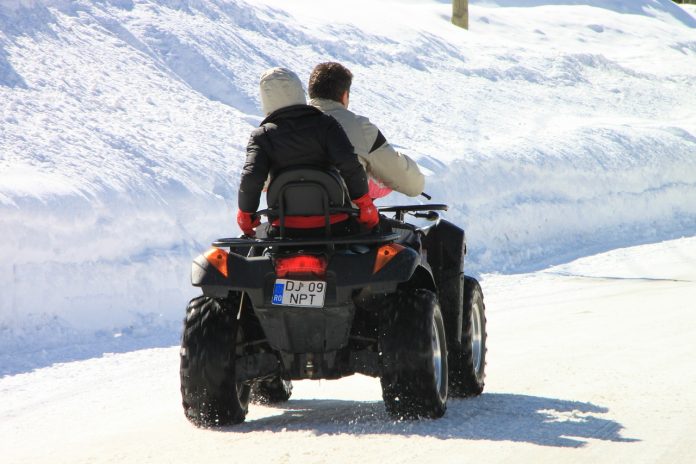Cold weather creates unique challenges for sportsmen. Among them, ATV maintenance should be a priority. As the weather gets colder, it becomes even more important. If you want to ensure top performance at lower temperatures, you need to invest in a winter maintenance regimen to prepare your ATV.
Maintenance
Fuel. One of the most common issues with ATVs that won’t start is moisture in the fuel tank, which can be caused by poor fuel. The problem starts at the gas station where fuel tanks have water in them and ends when the temperature drops and condensation builds in your tank. The best way to avoid this problem is by habitually using fuel stabilizer. Before it gets cold, fill your tank with fresh fuel and add fuel stabilizer. Then, you want to run the engine for about 10 minutes to distribute the stabilizer through the fuel lines. Make sure to fill the tank 85 to 90 percent full to prevent condensation when you plan to store your ATV.
Battery. When it’s cold outside batteries die. You can avoid a dead battery by removing it and taking it inside to charge at night, or by installing a trickle charger that’s permanently mounted to your machine and plugged into an outlet overnight. It’s also a good idea to make sure the battery connections are clean and tight.
Oil. Oil has a greater impact on extreme cold start-up than any other ATV fluid. If you want to ensure smooth starts throughout the winter months, do a fresh oil change in the fall. Follow the manufacturer’s guidelines for viscosity and type, and consider using a light synthetic oil in extremely cold climates. It’s also a good idea to check differential and transmission fluids and replace the air filter.
Other fluids. Replace all fluids with lubricants and coolants meant for cold weather. A coolant designed for lower temperatures will help your ATV start easier and run smoother. Any coolant more than two years old — even one intended for cold-weather use — needs to be changed.
Use the same philosophy when selecting a lubricant as you did for choosing coolant — choose one intended for cold weather. Remember to lubricate any control cables, such as brake and choke cables, clean and grease the chassis lube points, and clean and grease electrical connections with dielectric grease.
It’s not a bad idea to freshen or change your brake fluid, as well.
Let it warm up. When you cold-start your ATV, let it sit and idle for 10 minutes to allow the heat from your engine to warm the rest of its operating parts. After you take off, go no faster than about 5 mph for the first few minutes.











Inappropriate picture for this article. No extra rider….this changes center of gravity and distracts operator. Decal on ATV tells us no extra rider. Riders are ill dressed for cold weather and are not wearing helmets. Respectfully submitted.
It’s hard to tell, but there are 2-up atvs that do allow 2 people. The passenger sits just in front of the rear axel. However, a helmet should always be worn by both people, regardless of the laws. It’s just common sense.
Haha. They may be riding 5 mph. The owner of the vehicle can decide if its safe to have a passenger at slow speeds, regardless of the “safety stickers” that are there to protect the manufacturer from liability more than anything else. Warmer clothes? Thats individual preference. Maybe its not extremely cold out! helmets? Not necessary if riding at slow speeds away from roads that contain traffic. Might be a private road.